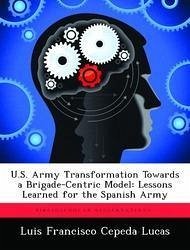The current U.S. Army Transformation process has experienced several changes due to operational commitments in the Global War on Terror (GWOT) and different perceptions about required military capabilities among political and military authorities. Nonetheless, the change from a division-centric Army to a brigade-centric one has remained an essential tenet of the Future Force. This change is being implemented amidst ongoing operations in the GWOT. The Stryker Brigade Combat Team (SBCT), derived from the initial concept of an Interim Force, has been employed both as a stop-gap measure to fill immediate operational needs, and as a prototype to test the design of the Future Force's brigade. An analysis of the evolution and implementation of both, the brigade-centric construct, and the SBCT's organization and capabilities, yields valuable lessons learned from these parallel processes. The Spanish Armed Forces are also involved in a transformational process, which includes conversion of its brigades as an essential milestone. Consequently, insights derived from U.S. Army experiences may prove valuable for the ongoing Spanish Army transformation--as well as for other armies attempting to implement similar changes. This study presents several conclusions from the U.S. transformational experience to a brigade-centric army, and lessons learned from the evolution and operational commitments of the SBCT, presented in a warfighting functions approach. The final result is ten recommendations, derived from an analysis of the concepts and practical experiences of the U.S. Army that might be applicable for the Spanish Army transformation.
Hinweis: Dieser Artikel kann nur an eine deutsche Lieferadresse ausgeliefert werden.
Hinweis: Dieser Artikel kann nur an eine deutsche Lieferadresse ausgeliefert werden.








